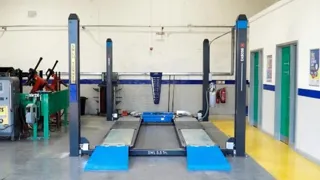This article was first published in the February edition of Fleet News.
Almost two-thirds of fleets would not support extending the first MOT from three years to four, new research suggests.
Government proposals, published in January, include changing the frequency of the vehicle safety test and improving the monitoring of emissions to tackle pollution.
Ministers claim the changes are necessary because today’s vehicles are built better and are more resilient to wear and tear, particularly with electric vehicles (EVs) having fewer moving parts.
The Government says pushing the requirement for the first MOT back from three years to four would also save money.
However, fleets fear that changing the current testing regime would be detrimental to road safety and suggest that vehicle mileages should be taken into account, rather than just the age of a car or van.
Matt Hammond, head of fleet at Altrad Services, told Fleet News at 10: “Why you would want to even think about extending when you consider the impact on safety?”
Hammond contends that the first MOT should be done at three years or upon reaching a mileage threshold, whichever comes first.
“Why are we saying three years or four years? We can have a car that does 20,000 miles in four years or a car that does 120,000 miles in 12 months,” he added.
The MOT has been in operation since the 1960s and the three-year threshold for the first test was introduced late in that decade.
The test was initiated to assure the safety of a vehicle, in practice the effectiveness of safety-critical components such as tyres and brakes.
In recent years, the concept of roadworthiness has been expanded to encompass vehicle emissions and effects on the environment.
DfT TO CONSULT FURTHER
The Government consultation on possible changes to the MOT closes on March 22 (after being extended), but the Department for Transport (DfT) says it will be consulting further on any detailed proposals that emerge from the review and produce impact assessments on any such proposals.
The DfT originally consulted in 2016 on extending the date of the first MOT, but decided not to make the change at that time due to safety concerns.
However, it points to new data now showing that fewer vehicles are failing MOT tests.
There have been reductions in the number of casualties in collisions involving cars and decreases in the proportion of collisions where vehicle defects are a factor.
In data provided by the Driver and Vehicle Standards Agency (DVSA), for most of the vehicles in scope, the initial failure rate of vehicles increases with their age.
For Class 4 vehicles in 2019, this rose from 14% for three-year-old vehicles to 16% for four-year-old ones.
It is anticipated that an increase in the number of vehicles operating with defects for a longer duration could lead to an increase in the vehicle defect-related collisions.
In 2019, there were 1,455 casualties in collisions where a vehicle defect was listed as a contributory factor for the vehicles identified in scope of this proposal, 20 of which were fatal and 333 and 1,102 were either serious or slight, respectively.
A Fleet News online poll showed a significant majority (59%) of respondents did not support changing the date when a first MOT is required. Two-in-five (39.2%) were in favour of the change.
Barney Goffer, UK product manager at Teletrac Navman UK, said: “One area we know causes MOT failure rates to increase – and the proposal itself states – is high mileage.
“The DfT’s 2016 consultation noted that while a three-year-old car does around 32,000 miles on average, vans do more than 70,000 miles.”
In 2021, the average mileage at year three, for class 4 vehicles was 25,379 and for class 7 (vans between 3.0 and 3.5 tonnes), it was 58,539.
Goffer continued: “By proposing to extend initial MOT tests by another 12 months, my concern is that a class 7 vehicle could be less roadworthy, but remain on the roads until tested in its fourth year.”
CONDITION OF CHARGING CABLES
National Grid fleet manager, Lorna McAtear, would also like to see greater focus on EV charging cables in a revamped MOT.
“If you happen to still have a spare wheel on a vehicle these days, then it gets tested,” she said. “Should your (charging) cable now be PAT tested?”























Rosco7010 - 07/03/2023 11:52
The MOT in the UK has a single purpose, which is to determine the safety and emissions condition of a vehicle that when new was safe and clean. I think it is fair to suggest that mileage and not age is a component of a vehicles safety, but mileage is not something an ANPR camera is going to be able to determine with the current processes. For that to work, some mileage validation and reporting is required, otherwise vehicles without a valid MOT would only ever be identified after an accident or other interaction with the police. Let alone making "clocking" more lucrative. I think based on annual mileages now being lower, extending the first MOT to 4 years is appropriate. However, the elephant in the room is the competence of some MOT's. I reckon everyone sees cars on the roads where visible smoke and other defects are present that shows no valid safety check has been carried out.